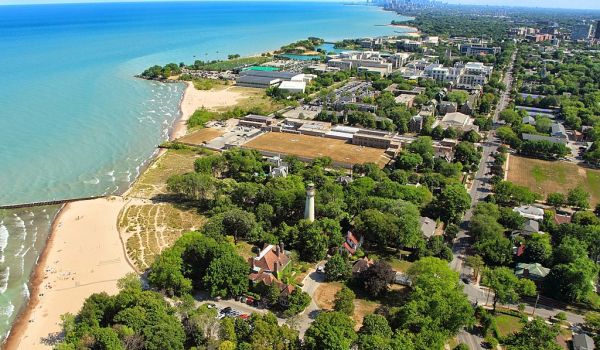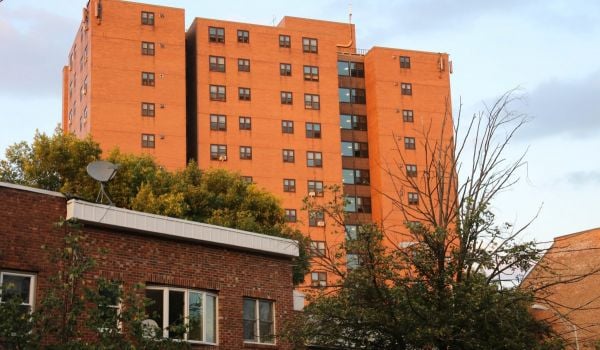Across the U.S., a staggering 55% of teachers are thinking about leaving their profession earlier than they had planned, according to a National Education Association survey. Those who go through with the change would join the roughly 600,000 teachers who, per U.S. Bureau of Labor Statistics data, left the job between 2020 and 2022 — and the impacts on kids are dire. To fill the gaps created by the teacher shortage, classroom sizes swell, courses are canceled, and unqualified educators are brought on to fill open positions.
One school district in Michigan has seen success with an innovative solution to help recruit and retain educators: Helping cover their rent and housing costs.
A partnership between the City of Battle Creek and Battle Creek Public Schools, the program began in 2018 and has continued thanks to funding from the W.K. Kellogg Foundation. The housing incentive began by making up to $10,000 available for assistance with down payments or home renovations to new and existing BDPS teachers. A year later, up to $4,500 of rental assistance per year was added to the mix. While the home renovation element was only briefly in place, last year the down payment assistance increased to $20,000, capped at 20% of a home’s value, as long as the home is in the city’s central target area.
“Even before the national teacher shortage hit the news, we wanted to have a strategy of innovation to attract talent to our community,” says Anita Harvey, the school district’s director of district transformation. “We realized that when teachers accepted positions in our district and they moved here, they stayed longer. So we wanted to ensure that when we invest in our teachers, they actually stay here. It’s an investment in our community.”
While teachers of the BCPS school district are the recipients, the foundation grants money to the city that then works with the school district to support teachers. The money never goes directly to the teachers. Instead the city works with realtors and landlords to help cover down payment and rental costs.
To date, more than 50 teachers have taken advantage of the down payment assistance while roughly 20 have used the rental assistance. The catch: Educators have to stay with the district for three years from the date of closing and use the home as their primary residence, or they’re responsible for paying the money back. For those taking advantage of the rental assistance, the money is available for the duration of a one-year lease which is the same amount of time the renter is required to use the units as their primary residence and stay with the district.
Once a new or existing teacher applies for the program, the city first verifies their employment with the school district. Next, an intake call takes place. “It’s usually about a half hour and it’s a way for us to get a really solid understanding of that person’s situation,” explains Laura Otte, the city’s enrollment coordinator for the program.
“If it’s someone from out of state who doesn’t know anyone here and has no idea where to start, we can connect them with a realtor or a lender. It’s for participant success, but also for us to gain some of that qualitative data that can inform future decisions as well,” Otte says, noting potential changes like increasing the original amount available for down payment assistance so that teachers can keep up with soaring housing prices.
One of the reasons that rental assistance was added after the initial launch was so that younger teachers who might not quite be ready for the commitment of home ownership could still be incentivized by the program. Harvey says it was about honoring where they were in their lives and finding a way to still support their desire to live in the community.
Across all of the programs, Harvey can think of just one teacher who hasn’t fulfilled the three-year commitment. In fact, many have stayed longer.
“I’ve had personal conversations with teachers who may have entertained other positions, but because they live here and are invested in their community and their home, they turned them down. So we have seen the impact of when people commit to the city they serve, it influences your employment and your decision to stay over time,” she says.
Harvey herself took advantage of the home rehab program while it was available. She used the funds she got to finally start and complete a bathroom renovation project that had continually fallen to the wayside during the previous years. Nathan Hunt, the district’s communications manager, used the down payment program to buy a home in the city. “Now we live just a couple of blocks from my son’s school,” he says.
The only real snag that the program has encountered so far was with timing. In the beginning, some teachers wanted to engage the program when they were getting ready to close on their home. This wasn’t enough time for the city to go through its process. So, after doing what they could to speed things up in those instances, the city worked with the district on communications to let teachers know that they should apply to the program as soon as possible.
So far the program has been renewed for the 2023 calendar year, but Otte says that she’d be surprised if the program — considering the relatively low investment — wasn’t something the foundation was strongly interested in continuing further.
This article is part of Backyard, a newsletter exploring scalable solutions to make housing fairer, more affordable and more environmentally sustainable. Subscribe to our weekly Backyard newsletter.

Cinnamon Janzer is a freelance journalist based in Minneapolis. Her work has appeared in National Geographic, U.S. News & World Report, Rewire.news, and more. She holds an MA in Social Design, with a specialization in intervention design, from the Maryland Institute College of Art and a BA in Cultural Anthropology and Fine Art from the University of Minnesota, Twin Cities.
Follow Cinnamon .(JavaScript must be enabled to view this email address)


















